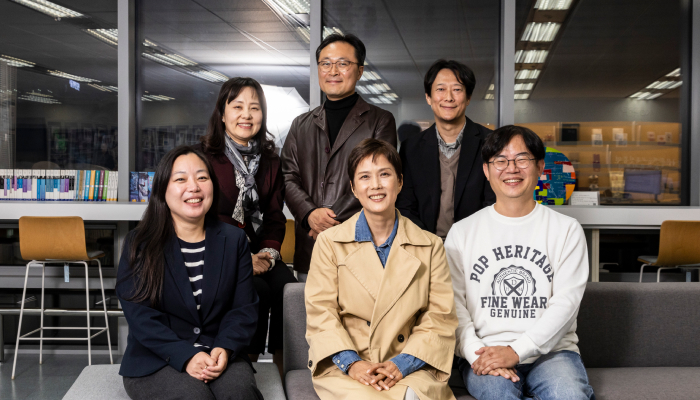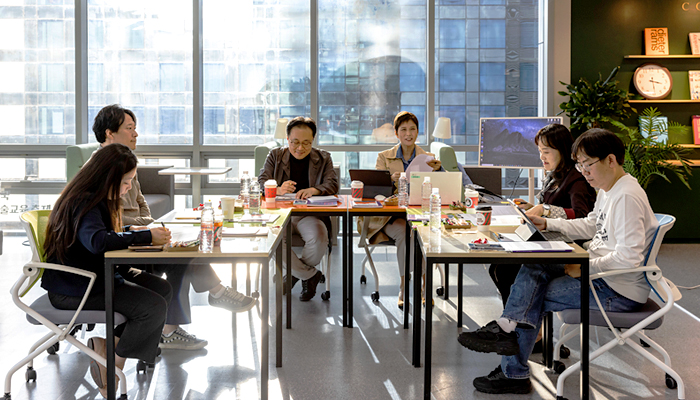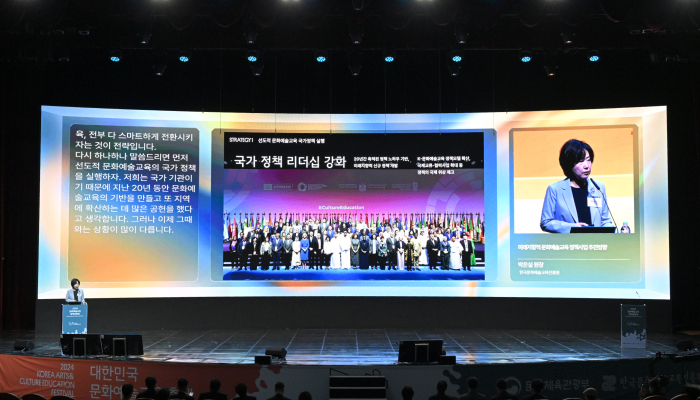
Hanok (the Korean traditional house) is built expecting 200~400 years to last. Since the residents will live there for a long time, a carpenter must understand both geographical and geological features of the land as well as the characteristics of the residents prior to beginning the construction. That is why the one who build a Hanok becomes a philosopher and historian as well as a carpenter. An honorary educator, Jo Jeon-whan as a Daemokjang (a great carpenter) was full of practicality, philosophy, and creativity inside him just like well-built Hanok.
Third generation of Daemokjang
“It was not my dream to be a carpenter when I was little. I just picked up doing it from my father, but in fact, I entered an engineering school for college. After all, I just quit the college in 8 months and decided to take over his father’s job.” He was born in the family of a carpenter, he was naively honest, and he liked hearing the sound of planing the wood. All these factors made him a Daemokjang.
It was when he participated in Gyeongbokgung Palace restoration project which made him to actively work on his carpenter work. 11 years have passed since he established his company ‘Yiyeon Hanok’ which means to enrich the nature. He has been introducing the Hanok, which is friendly to both the nature and the human being, to the public.
Modernistically translated the Hanok
There is only a computer on the table of Jo. There is neither a paper blueprint nor a T-square. All the blueprints are displayed on the monitor in 3D. When we go to Gyeongju, we will be able to find the first Hanok hotel ‘La-gung’ which is popular among foreign VIPs. He adopted computer-based designing program to Hanok construction for the first time, which made it possible to complete the construction within 6 months. If he had not sat in front of his computer day and night for 45 days, it would have been impossible.
In the meanwhile, however, he sacrificed his health. He had to meet with a falling accident at the construction site, which resulted in his injury on his back. Now he is unable to lift something heavy, and his eyesight has been declining because he had been watching the computer monitor for a long time.
He, as a carpenter, has been enthusiastic about his creation work and at the same time actively participating in arts and culture education as an honorary educator. When I asked him how he felt about his ‘Hanok Class’ for high school students, his attitude became a little more earnest.

Possibility is beautiful
“When a person rides a horse, he or she has to saddle up on an appropriate place for balancing. The Hanok is the same. It keeps the balance between the nature and the human being so that they can exist together. I want to have my student realize their sense of balance. I hope they get rid of the idea that they just live as what others do, and focus on their future.”
‘The Hanok Class’ will take place in Hanyang Technical High School, which is the first one implemented in the public education. Jo says that he does not think he will be ‘teaching’ them. He will just communicate with them, and share all the things he knows or experienced with them. He looked somewhat excited when he told that he had better leave the students’ worries for their own assignments.
“There is a saying that you have to give 70% of what you know to the students. I believe that it is the very necessary educational philosophy in the current education system. It is very dangerous to cram the knowledge to them without letting them to think by themselves. I hope the students have curiosity about the Hanok, seriously think about it, and build up their creativity.”
‘Carpenter’ who build something
Working as an arts educator is not the only challenge. He earned an opportunity to build Hanok in Germany while he was deliberating where the boundary is that the cultural gene of the Hanok can be transferred. If the Hanok becomes an issue in Germany, it will have a great ripple effect.
Some people worry about him because he never hesitates to challenge for new project. However, all these worries are utterly groundless. Jo is a person who builds houses. It is only after he established a basis for set up the pillar when he tries to challenge for something new. It is just like when he builds a Hanok after a thorough planning. If we have to define Jo in a word, he should be ‘a carpenter’. He is a carpenter in the small town, who sometimes performs installation art, plays a performance, and teaches students. I was able to see the true aspect of ‘a carpenter’ while talking to him. I realized that the real carpenter should be the one who build houses, the world, and the human.
Written by Kim Ji-hye, Photographed by Kim Byeong-gwan
기사가 좋았다면 눌러주세요!
비밀번호 확인



















댓글 남기기